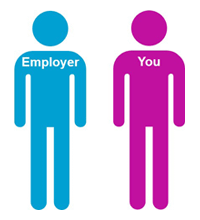What is MPF?
MPF = Mandatory Provident Fund
You've heard about MPF. You've read about MPF. But do you really know what MPF is? Allow us to explain. For most of us, it's important that we save to provide for our future so that we have money reserved for old age.
That might seem many many years away right now, but time flies and before you know it you might be considering where your money will come from once you stop working.

Once you stop working, where will you get the money to pay for your daily expenses?
Launched in December 2000, MPF is simply a retirement investment plan which makes saving compulsory, to ensure that most Hong Kongers will have money put by for the future.
Or to give it its official description - a mandatory, privately managed, fully funded contribution scheme.
Bit by bit, month by month, 5% of your salary while you are earning, will be contributed to your MPF, and matched by a mandatory contribution by your employer.

In other words, MPF is you being paid to save. That's not a bad thing is it?
And while MPF is an important part of your retirement income, on its own it is not enough to cover your entire post-retirement expenses or your future retirement needs. It is only a part of a multi-pillar approach for retirement protection, as envisioned by the World Bank in its report released in 1994.
However, big or small the contributions are, year by year they will add up to quite a respectable amount by the time you retire.
|
Like growing a small seed into a healthy plant, with the right care and attention, you can grow your MPF into something worthwhile for the future. |
 |















